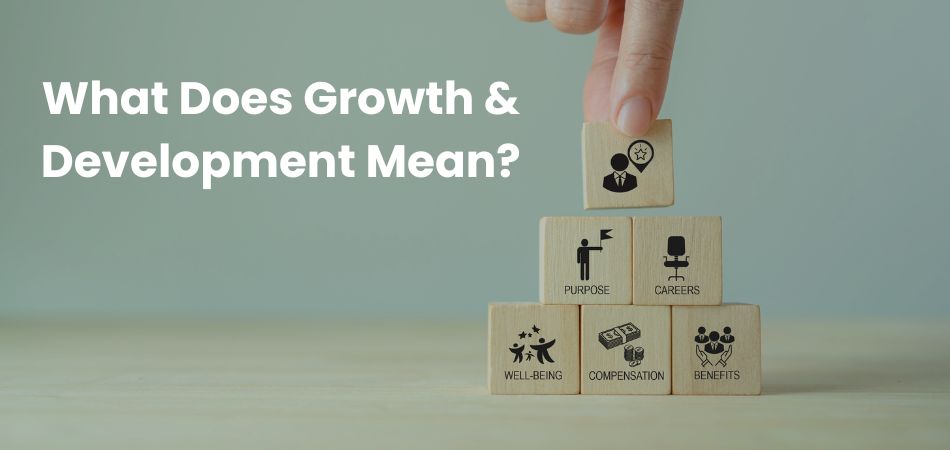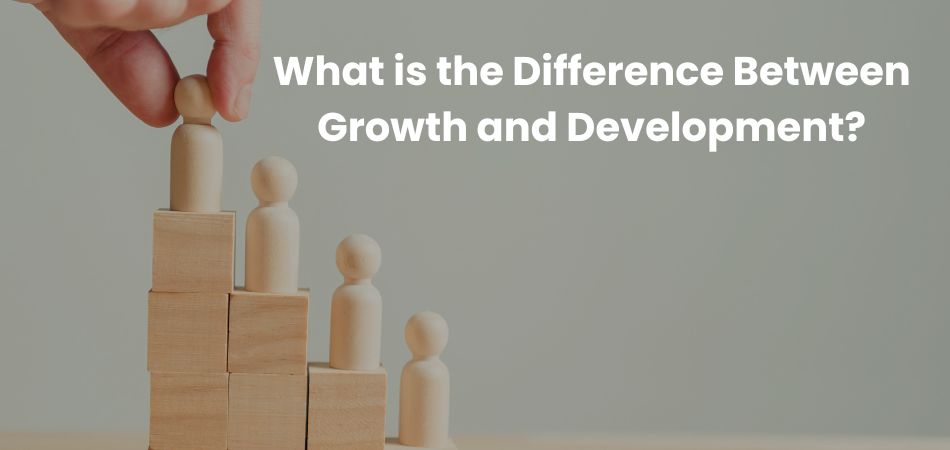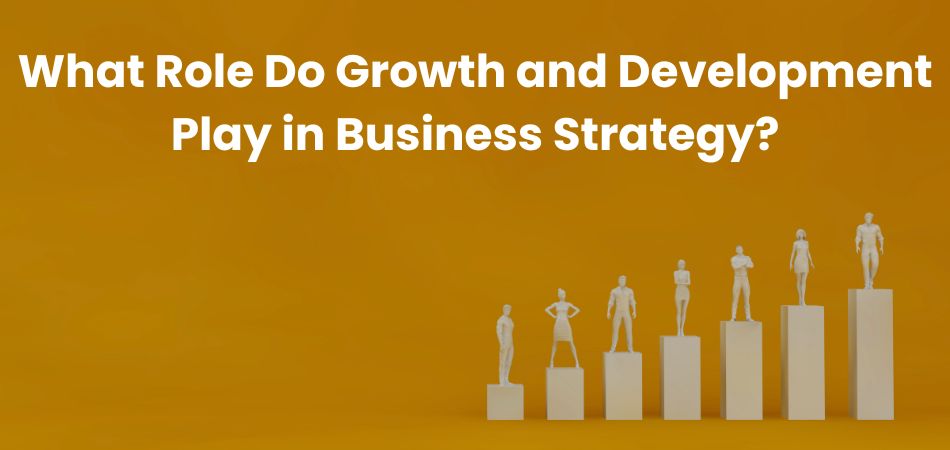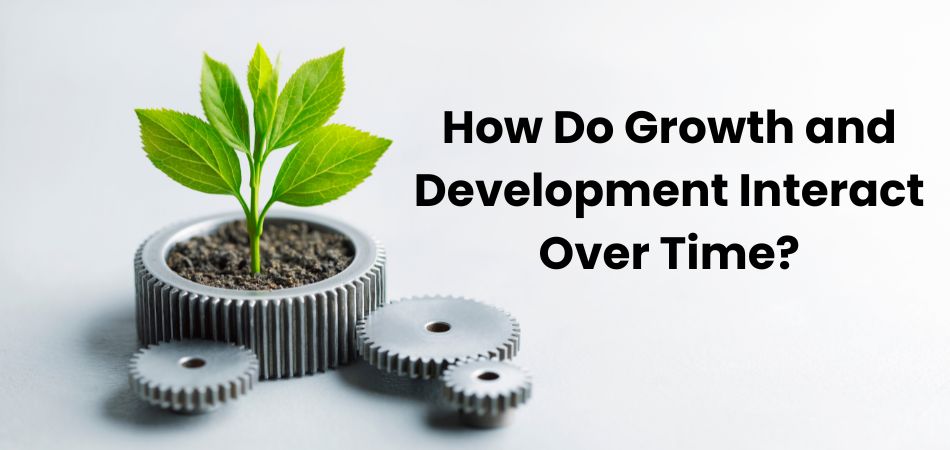Growth and development are two concepts often used interchangeably, but they hold distinct meanings that impact how we perceive progress in various contexts. Whether discussing personal achievements, business expansion, or societal progress, these terms carry different implications. So, what is the difference between growth and development?
Growth refers to measurable increases in size, quantity, or value, while development focuses on qualitative improvements in functionality or capability, ensuring sustainability and meaningful progress over time. They are distinct yet interconnected concepts.
We’ll discuss how growth and development differ across fields, why they matter, and how focusing on one over the other can impact outcomes. Let’s explore these concepts in more detail.
What Does Growth & Development Mean?
Growth and development are fundamental concepts that describe progress and change, but they differ in scope and meaning. Growth refers to an increase in size, quantity, or measurable aspects, such as height, weight, revenue, or population. It is often linear and quantitative, providing tangible evidence of expansion or accumulation. For example, a child growing taller or a business increasing profits are clear indicators of growth.

In contrast, development is more qualitative, involving improvement, advancement, or refinement. It focuses on enhancing capabilities, efficiency, and quality. For instance, a child learning new skills or a business improving its operational processes exemplifies development. Unlike growth, development considers the underlying changes that lead to better functionality or sophistication over time.
Together, growth and development form a complete picture of progress. While growth often serves as a foundation, development ensures meaningful and sustainable change, making the two interdependent yet distinct.
What is the Difference Between Growth and Development?
Growth and development are closely related but fundamentally distinct concepts. Growth is about measurable increases, while development focuses on qualitative improvements. The table below outlines key differences to help clarify their own characteristics.

| Aspect | Growth | Development |
| Definition | Increase in size, quantity, or measurable attributes | Improvement in quality, capability, or functionality |
| Nature | Quantitative | Qualitative |
| Focus | Expansion or addition | Enhancement or refinement |
| Example (Personal) | Gaining weight or height | Learning new skills or improving cognitive abilities |
| Example (Business) | Increasing revenue or market share | Streamlining operations or encouraging innovation |
| Measurement | Easily measurable (e.g., numbers, sizes) | Harder to measure, often subjective |
| Timeframe | Can be immediate or short-term | Usually long-term and gradual |
| Dependency | Growth can occur without development | Development often requires a foundation of growth |
| Outcome | May not lead to sustainability or long-term success | Focuses on sustainable and meaningful improvement |
| Interrelation | A precursor or complement to development | Builds upon or enhances growth |
Key Characteristics of Growth and Development
Growth and development are vital concepts that reflect different aspects of progress. While growth emphasizes measurable increases, development focuses on qualitative improvements and sustainability. Below, we outline the defining characteristics of each to highlight their distinctive roles and interdependence.
Growth
- Quantitative Nature: Growth involves measurable changes such as size, quantity, or number.
- Physical Expansion: Typically relates to physical or external increases, such as height, weight, or revenue.
- Short-Term Impact: Growth can occur over a shorter timeframe and may not always be sustained.
- Tangible Evidence: Easily observed and measured, like population growth or profit increases.
- Independent Progress: Growth can happen without significant improvement in quality or capability.
Development
- Qualitative Nature: Development focuses on improvements in quality, capability, or function.
- Holistic Progress: Encompasses intellectual, emotional, and structural advancements.
- Sustainable Change: Often involves long-term, meaningful improvement that promotes sustainability.
- Complex Measurement: Harder to quantify, as it may involve subjective or indirect metrics like skill enhancement or innovation.
- Interdependent Evolution: Development often relies on a foundation of growth but leads to deeper, more meaningful progress.
Examples of Growth vs. Development in Everyday Life
Real-life scenarios help clarify the difference between growth and development. From personal milestones to organizational success, both concepts manifest uniquely across contexts. Here are some examples of how growth and development play out in everyday life.
Growth vs. Development in Personal Health
Growth in personal health often involves visible changes, such as gaining muscle mass or losing weight. These are measurable and signify physical changes. Development, on the other hand, focuses on improved habits like consistent exercise or adopting a balanced diet for long-term health benefits. Both are crucial, but development ensures sustainable well-being beyond the numbers on a scale.
Growth vs. Development in Education
In education, growth is seen in the accumulation of knowledge, such as memorizing facts or passing exams. Development, however, lies in cultivating critical thinking, problem-solving skills, and emotional intelligence. For example, a student may grow by scoring high marks but develop by applying their knowledge to real-world problems. In general, personal development examples include effective time management or learning how to collaborate effectively.
Growth vs. Development in Relationships
Growth in relationships might look like expanding your social circle or spending more time with loved ones. Development, by contrast, focuses on deepening connections through trust, communication, and empathy. A friendship may grow in size but develops when you truly understand and support each other. Both aspects contribute to meaningful and lasting relationships.
Growth vs. Development in Business
Business growth often involves increasing revenue, expanding markets, or hiring more employees. Development occurs when a company improves its processes, invests in employee skills, or innovates its products. For instance, a growing company may open new branches, but a developing company focuses on enhancing customer satisfaction and operational efficiency. Together, they ensure both expansion and long-term success.
Growth vs. Development in Technology
In technology, growth is evident when more devices are produced, or user numbers increase. Development, on the other hand, focuses on improving functionality, usability, and innovation. For example, a tech company may grow by selling millions of smartphones, but it develops by introducing features like better security or accessibility. This balance drives meaningful progress in the tech world.
What Role Do Growth and Development Play in Business Strategy?
Growth and development are essential components of a successful business strategy, yet they serve different purposes. While growth focuses on increasing measurable outcomes, development emphasizes sustainable improvements. Below, we explore how these concepts impact various aspects of business strategy.

Driving Revenue Growth
Growth plays a crucial role in increasing a business’s revenue through sales, market share, or customer acquisition. This measurable expansion helps companies scale their operations and compete effectively. However, revenue growth alone isn’t enough without aligning it with strategic development.
Better Operational Efficiency
Development in business strategy emphasizes refining internal processes to improve efficiency and reduce costs. This can include adopting new technologies, streamlining workflows, or upskilling employees. Such improvements ensure that growth is supported by a strong operational foundation.
Expanding Market Presence
Business growth strategies often target entering new markets or launching additional products. This expansion increases visibility and customer reach, boosting overall profitability. Complementing this with development ensures the business adapts to market demands and maintains quality standards.
Build Long-Term Sustainability
While growth focuses on short-term gains, development ensures that progress is sustainable over time. This involves investing in innovation, corporate social responsibility, and talent development. A well-rounded strategy balances both to secure a business’s future.
Strengthen Customer Relationships
Growth strategies aim to increase the customer base, but development focuses on enhancing customer satisfaction and loyalty. This includes personalized services, better product quality, and improved user experiences. A balance of growth and development creates a loyal, long-term customer base.
Is Development Always Better Than Growth?
While development often holds a more sustainable and qualitative appeal, it’s not necessarily always better than growth. Growth is crucial in many contexts, especially when resources, visibility, or market presence are essential for success.
For example, a startup might prioritize growth to capture market share or attract investors. Without measurable growth, even the most innovative ideas or processes may fail to gain traction. Growth creates the foundation for businesses or individuals to scale, expand, and seize opportunities.
However, development brings depth and longevity to progress. It ensures that growth isn’t just rapid or superficial but meaningful and sustainable. For instance, a business that grows too quickly without developing efficient processes or a skilled workforce may struggle with operational inefficiencies.
Similarly, in personal life, focusing solely on measurable achievements without self-improvement can lead to burnout. So, neither is inherently better; the ideal strategy often requires a balance between growth and development.
How Do Growth and Development Interact Over Time?
Growth and development are closely intertwined, with their interaction evolving as time progresses. Initially, growth often takes precedence, particularly in the early stages of personal or organizational progress. For instance, a business may focus on expanding its customer base or revenue to establish itself in the market. Similarly, in personal life, early achievements like gaining knowledge or improving physical abilities reflect growth as a foundational step.

Over time, development plays a more prominent role, building on the foundation laid by growth. As organizations mature, they prioritize refining operations, enhancing employee skills, and encouraging innovation. In personal life, individuals shift from accumulating milestones to enhancing their quality of life, such as cultivating emotional intelligence or long-term skills. Development ensures that the initial growth leads to meaningful, sustainable progress.
The interaction between growth and development is cyclical. Growth provides the resources and opportunities needed for development, while development ensures that growth remains purposeful and sustainable. Together, they create a dynamic process of continuous improvement.
Frequently Asked Questions (FAQs)
Growth and development are widely used concepts across various fields, often leading to questions about their practical applications and implications. Their nuances provide insight into how they affect success in different areas of life and work. Below are some frequently asked questions about growth and development with clear, concise answers.
1. Why Is Growth Important in Personal and Professional Life?
Growth provides the foundation for achieving new milestones and expanding opportunities. In personal life, it helps individuals gain new experiences and skills, while in professional settings, it allows businesses to scale and compete. Without growth, progress often stagnates, limiting potential.
2. How Can Development Ensure Long-Term Success?
Development focuses on refining and enhancing the quality of processes, skills, or systems, leading to sustainability. It ensures that progress is meaningful and aligns with long-term goals. For example, developing problem-solving skills or innovating products strengthens the foundation for future achievements.
3. Can Growth Happen Without Development?
Yes, growth can occur independently, such as increasing revenue or market share without qualitative improvement. However, growth without development can lead to inefficiencies, instability, or short-term gains. Development complements growth by ensuring that progress is sustainable and well-rounded.
4. How Do Organizations Balance Growth and Development?
Organizations balance growth and development by setting short-term goals for measurable expansion and long-term strategies for qualitative improvement. For example, a company might grow by increasing its customer base while developing better customer service practices. Balancing the two ensures both immediate and lasting success.
5. What Are Common Challenges in Managing Growth and Development?
Managing growth and development can be challenging due to limited resources, time constraints, or conflicting priorities. Growth often demands immediate action, while development requires careful planning and investment. Striking a balance between the two is key to overcoming these challenges effectively.
Final Words
Being aware of what is the difference between growth and development is essential for achieving balanced progress in any area of life or work. Growth focuses on measurable increases, like size, revenue, or quantity, while development emphasizes qualitative improvements, such as efficiency, sustainability, and meaningful change.
Both are interconnected, with growth providing the foundation and resources for development, and development ensuring that growth leads to lasting value. Whether in personal, professional, or societal contexts, balancing growth and development is key to achieving long-term success. By recognizing their distinct roles, we can create strategies that support holistic and sustainable progress.
